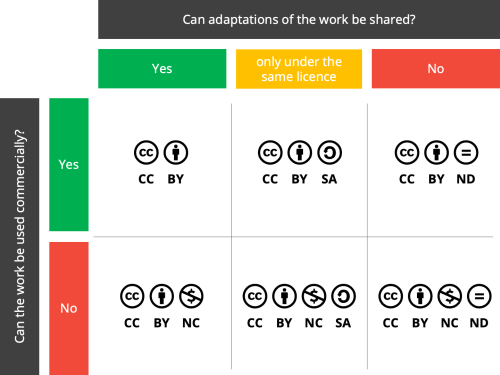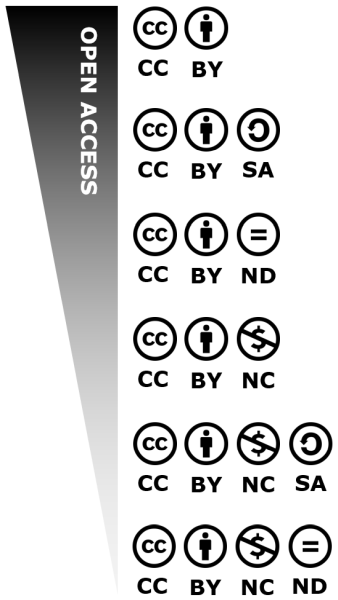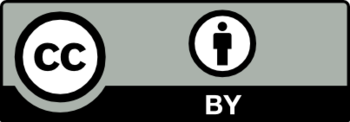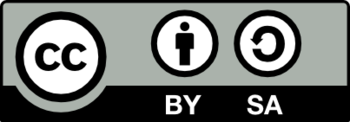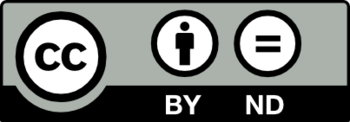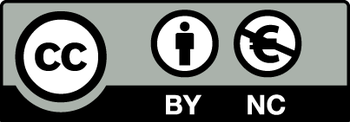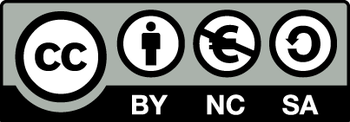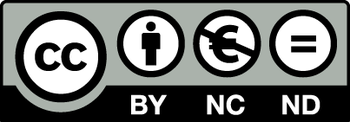Creative Commons licences
Besides free access, open access also means that scientific works can be used as freely as possible. Such free use is enabled by the use of open licences. The licences of Creative Commons have become the de-facto standard. With these licences, authors can easily define how others may use their works by granting corresponding rights of use to their works, thereby creating free and open content. The use of the Creative Commons licences is free of charge.
Choosing a licence
Creative Commons licences can comprise four licence conditions:
- BY – Attribution
- SA – Share Alike
- ND – No Derivatives
- NC – Non-Commercial
The combinations of licence conditions result in a total of six different licences along the following questions:
Attribution (BY), which is the condition of appropriate authorship and rights indication, is an obligatory component of all licences. Hence, the CC BY licence is the most basic licence and the starting point, so to speak. If this condition is sufficient for you and you do not want any further restrictions on use from the very start—which is recommended for open access—then choose the CC BY licence. Otherwise, you should specifically check which uses you want to allow or restrict according to the licences. If you want to restrict certain uses, however, you should look carefully and know what this means and what the consequences are.
Looking closer: Licence conditions and their consequences
Meaning: Appropriate authorship and rights information must be provided. This means that the author or authors, the source, and the licence (including reference/link) of the work must be given. It must also be stated whether and, if so, how changes have been made.
Consequence and problem: Attribution is mandatory. Each of the licences requires appropriate authorship and rights statements when the licensed work is used. This may lead to complicated authorship and rights statements in the case of multiple derivative works.
Note: With CC0, Creative Commons also offers the option of waiving the condition of attribution. This is appropriate for marking works for which no copyright protection is possible or given from the outset, and for works that one would like to release into the public domain. This can be useful for certain types of research data, among others. You can find more on this in the frequently asked questions (below).
Related Links
Meaning: Modifications are permitted but only under the restriction that the modified works are licensed under the same licence as that of the original work when published.
Consequence and problem: In practice, the condition Share Alike has the effect of the licence being inherited. For adapted works, it is therefore effectively contagious in the event of publication—with no remedy. This is precisely the problem: If parts of a work licensed in this way are to be used in a new work (e.g., an illustration or a research article that is to be reprinted in an anthology), this new work would have to be published with the same licence. At first glance, this seems positive because it ensures that free content is created once again. In practice, however, this is often not possible, for example, because the new work is supposed to be published with a more open licence, because it is not published open access and thus without an open licence, or because different works are supposed to be reused whose licences are incompatible to one another.
Related Links
Meaning: Modifications or a remix of the work are not permitted to be distributed or published.
Consequence and problem: The exclusion of modifications is absolute. Only unmodified use is then possible. This makes many legitimate and, above all, very common cases of reuse impossible, for example, the use of an illustration or a longer section of text in a new work. The Creative Commons licences do not offer the possibility of allowing or prohibiting only certain modifications.
Related Links
Meaning: The work is not permitted to be used for commercial purposes.
Consequence and problem: The exclusion of commercial use is often favoured in science at first glance. However, what constitutes commercial use is often misunderstood and consequently also how extensive this exclusion is. A use is considered commercial if it is primarily geared toward remuneration or a monetary benefit (commercial is not synonymous with the earning of profits). Moreover, commercial uses are quite common both in science and in education in general: Scientific publishing and scientific events can often be considered commercial; private universities and scientific institutions operate commercially; and in education, nonprofit organisations, associations, small- and medium-sized enterprises, freelancers, self-employed persons, and other actors clearly operate in a commercial field. All of these sectors and actors would be categorically excluded from using works with licences that prohibit commercial use. Additionally, the lack of clarity and legal uncertainty in the interpretation of commercial and noncommercial use leads to the situation that the use of works is also refrained from as a precautionary measure because the noncommercial purpose is too ambiguous or not guaranteed or the expertise for a proper assessment is not available.
Related Links
Recommendation: CC BY
For scientific publications, the use of the CC BY licence is recommended.
Good for science! The CC BY licence is fully compliant with the principle of open access and enables a high degree of visibility and opens up extensive opportunities for reuse—which in turn enables the wide dissemination of your research, results, and ideas. The condition of the licence, namely, attribution, is standard practice in science when citing and reusing anyways.
In the spirit of open access! Open access does not only mean the free availability of scientific content online but also implies that content can be reused as freely as possible. Only in this way can truly free and open content be created—with an advantage not only for society but also for science itself: Since research and scientific work always build on the preliminary work of others, scientists and scholars also benefit from freely licensed content for subsequent use in their own works and should therefore also license their own content as freely as possible. The CC BY licence is the best way to ensure free reuse in this sense.
No restrictions! Refrain from licences that exclude modifications and/or commercial use. Works licensed in this way cannot be considered truly free and open. Many common and legitimate uses in science and education would be excluded.
The licences in detail
Provided that the name of the author(s)/right holder(s) is/are acknowledged, this licence allows the content to be reproduced, distributed, and publicly presented. Modifications may be created and distributed.
This licence is considered to be fully compliant with open access, as it implements the requirement of free reuse as formulated in important open access declarations (e.g., the Berlin Declaration).
Related Links
Provided that the name of the author(s)/rights holder(s) is/are acknowledged, this licence allows the content to be reproduced, distributed, and publicly presented. The content may be modified (including translations of the work), but the modified version must be distributed under the same licence.
This licence is considered to be mostly compliant with open access, as all forms of reuse are permitted, but the publication of a modification is subject to the condition that it is published under the same licence.
Related Links
Provided that the name of the author(s)/rights holder(s) is/are acknowledged, this licence allows the content to be reproduced, distributed, and publicly presented. The content may not be modified or published in any other modified form. The content may be used commercially.
This licence is not considered compliant with open access, as it restricts various forms of reuse that are desired in the context of open access.
Related Links
Provided that the name of the author(s)/rights holder(s) is/are acknowledged, this licence allows the content to be reproduced, distributed, and publicly presented. The content may be modified or published in a modified form. The content may not be used commercially.
This licence is not considered compliant with open access, as it restricts various forms of reuse that are desired in the context of open access.
Related Links
Provided that the name of the author(s)/rights holder(s) is/are acknowledged, this licence allows the content to be reproduced, distributed, and publicly presented. The content may not be used commercially. The content may be modified (including translations of the work), but the modified version must be distributed under the same licence.
This licence is not considered compliant with open access, as it restricts various forms of reuse that are desired in the context of open access
Related Links
Provided that the name of the author(s)/rights holder(s) is/are acknowledged, this licence allows the content to be reproduced, distributed, and publicly presented. The content may not be used commercially. The content may not be modified or published in any other modified form.
This licence is not considered compliant with open access, as it restricts various forms of reuse that are desired in the context of open access.
Related Links
These Creative Commons licences are currently available in version 4.0. They are drafted in such a way that they are internationally applicable.
Frequently asked questions
If, for example, an article submitted to an open-access journal is accepted for publication or a book manuscript is accepted by a publisher for open access publication, the choice of a Creative Commons licence is necessary before final publication. In the case of journal articles, the licence selection is usually made by the authors as part of a sometimes automated publication process; however, the licence may be predefined for the journal, so that in such a case, the authors primarily confirm the selection of a licence. In the case of books, the licence selection is usually made by the authors in the course of communication with a publisher and is finally agreed upon in a publication contract. In the case of open access publication of research reports, discussion papers, and theses (such as dissertations)—that is, types of publications that are preferably published via a publication server or repository—authors can select the licence as part of the publication process of the publication server or repository.
Open access does not only mean the free availability of scholarly content online but also includes making content as freely reusable as possible. Only then is truly free and open content created. Free and openly published scientific results promote science and research and are an enormous benefit to society. Research is always built on previous work by others, and all scholarly works draw on and cite previous publications and content. Furthermore, free reuse enables the greatest possible dissemination and thus visibility. However, the reuse of much content is only possible to a small extent, not at all or only with great difficulty. Wanting to reuse a nice diagram for a theory, a concept or an experiment from a research article for a textbook or a poster can require time-consuming inquiries with occasionally ambiguous rights holders and without any guarantee of success. This problem is avoided with open access and by granting reuse permissions as freely as possible using open licences. Scientists benefit from openly licensed content for subsequent use in their own works and should therefore also license their own work as freely as possible.
The CC BY licence fully enables such free reuse in the sense of open access. This broad definition of open access was already set out in the Berlin Declaration on Open Access to Knowledge in the Sciences and Humanities:
“The author(s) and right holder(s) of such contributions grant(s) to all users a free, irrevocable, worldwide, right of access to, and a license to copy, use, distribute, transmit and display the work publicly and to make and distribute derivative works, in any digital medium for any responsible purpose, subject to proper attribution of authorship (community standards, will continue to provide the mechanism for enforcement of proper attribution and responsible use of the published work, as they do now), as well as the right to make small numbers of printed copies for their personal use.”
The licences to be selected for publications may be mandated as part of research funding. This is common for funding open access publications from publication funds and for funding from research funding institutions (as in the case of the EU's Horizon Europe research framework programme).
Licences may also be predefined for individual publication outlets or by publishers. For example, many journals have a standard licence for the open access publication of an article, which authors may not change and thus only agree to a certain license if their article is accepted and published. Sometimes it is possible to change the licence in individual cases under an opt-out principle. However, publishing open access without a licence is generally not possible. In the case of books that are to be published by a publisher, there are usually no fixed specifications, but there is often a preselection or recommendation of a licence on the part of the publisher. It is important to be aware that publishers may prefer restrictive licences out of commercial self-interest and often offer no or only inadequate consultation on licences.
Besides licences, Creative Commons also offers CC0 (Creative Commons Zero) for use. With CC0, rights holders can waive all rights to a work and release the work for unconditional use. It is however explicitly not another licence but is referred to accordingly as the CC0 dedication. In contrast to the most open Creative Commons licence CC BY, the condition of attribution is also not required here. A work with the CC0 dedication can be used, edited, distributed, and published for any legal purpose; its use is not restricted in any way by licence conditions.
However, CC0 should not be confused with a work being in the public domain. In the case of works in the public domain, copyright protection has expired or did not exist in the first place due to a lack of originality or due to a legal exception. The CC0 dedication can be used for a copyrighted work to release it for use equivalent to the public domain. CC0 was designed in such a way that it can be used worldwide in different jurisdictions. Since a waiver of copyright protection is not possible under German copyright law, CC0 is equivalent to a waiver of all possible rights and legal claims by the creator. By contrast, in American copyright law, for example, authors can waive copyright for a work and release it into the public domain; in that case, CC0 means exactly that.
In science, CC0 is particularly suitable for content for which unconditional use by third parties is acceptable or advantageous for common use purposes (e.g., charts and graphics) as well as for content for which copyright protection may not even apply in the first place or where attribution to a work would lead to impractical or close to impossible efforts (e.g., research data).
Related Links
It is usually sufficient to refer to a “use” of a work. Reuse refers to a particular form of use, namely the use of the work or part of a work in the context of a new work or in the context of another intellectual work or creation (such as an event, a performance, or the like). Reuse thus focuses on these aspects, as opposed to a more basic use such as reading, printing, or unaltered reproduction (as in the case of an audio or video work). However, reuse is ultimately only a subset of the term use and not a separate concept.

